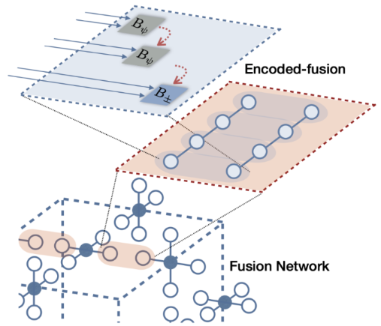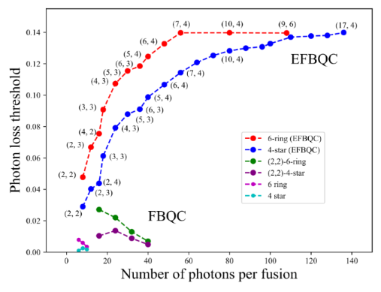Post-Silicon Semiconductor Institute
Developed proprietary quantum error correction technology beyond the world's leading quantum computing companies
- Date : 24-09-09
- Views : 460
- Quantum error correction is a key technology in the implementation and practicalization of quantum computing
- Groundbreaking quantum error correction technology contributes to the development of K-quantum computing deployments
Solving the problem of error is essential for the practical application of quantum computing technologies that surpass the performance of digital computers. Information input into a qubit, the smallest unit of quantum computation, is quickly lost and error-prone. No matter how much we mitigate errors and improve the accuracy of qubit control, as the system size and computation scale increase, errors accumulate and algorithms become impossible to perform. Quantum error correction is a way to solve this problem. As the race for global supremacy in quantum technology intensifies, most major companies and research groups leading the development of quantum computing are now focusing on developing quantum error correction technology.
Dr. Seung-Woo Lee and his team at the Quantum Technology Research Center at the Korea Institute of Science and Technology (KIST) have developed a world-class quantum error correction technology and designed a fault-tolerant quantum computing architecture based on it. They have demonstrated that this technology can outperform the quantum error correction technology recently developed by PsiQuantum, a global leader in the development of general-purpose quantum computers.
The performance of universal quantum computing with quantum error correction is evaluated by its fault-tolerance threshold. This threshold indicates how well errors in quantum computing can be corrected, and the better the error correction technology and architectural design, the higher the value. PsiQuantum, an American quantum computer developer, has proposed a quantum computing architecture that utilizes photon entanglement resources, fusion techniques, and error correction technology, and is developing universal quantum computing hardware based on it. The photon loss threshold of the PsiQuantum method is reported to be 2.7%. The new error correction technique and quantum computing architecture developed by the KIST research team outperforms this. KIST's technology can achieve a photon loss threshold of up to 14%, which is currently the highest threshold in the world. In addition, KIST's error correction technique is much more resource-efficient than its quantum counterpart, even with the same photon consumption.
The research is the first of its kind in Korea, and it is significant that Korea, a laggard in the field of quantum computing, has developed a world-class core technology. In particular, quantum error correction technology is an essential element in the development of quantum computers utilizing not only photon-based but also superconducting qubits, ion traps, and neutral atoms, which are highly competitive in R&D worldwide. This achievement shows that Korea has the potential to catch up with and even outpace the technology of leading countries in the quantum field. It is also expected to play an important role in building an independent quantum computing system by applying this achievement, which has completed domestic and international patent applications.
"Just like semiconductor chip design technology, designing fault-tolerant architecture is important for quantum computing," said Dr. Seung-Woo Lee of KIST. Even if there are 1,000 physical qubits, it would be difficult to compute a single logical quantum task unless there is a structure that performs quantum error correction." 'The practicalization of quantum computing is still a long way off, but we believe that our research has contributed to bringing that time forward,' said Dr. Lee.

[Figure 1] Fault-Tolerant Fusion-Based Quantum Computing Architecture with Quantum Error-Correcting Fusion / A fault-tolerant quantum computing architecture designed using quantum error-correcting encoded-fusion techniques. By adding layers of architecture, it utilizes multiple quantum error correction codes in fusion (Shor codes) and quantum computing architecture (Surface codes).

[Figure 2] Photon Loss Tolerance Thresholds / Graph of photon loss tolerance threshold versus number of consumed photons compared to the results of PsiQuantum's method, Fusion-based Quantum Computing (FBQC). The encoded-fusion-based quantum computing (EFBQC) developed in this study achieves thresholds of up to 14%, significantly exceeding PsiQuantum's maximum threshold of 2.7%, and achieving significantly higher thresholds while consuming the same number of resources (photons).
###
KIST was established in 1966 as the first government-funded research institute in Korea. KIST now strives to solve national and social challenges and secure growth engines through leading and innovative research. For more information, please visit KIST’s website at https://eng.kist.re.kr/
This research was supported by the Ministry of Science and ICT (Minister Yoo Sang-im) under the KIST Major Project and Bilateral Technology Cooperation Project (2022M3K4A1094774). The research was published* on August 1 in the international journal Physical Review Letters (IF: 8.1 JCR field top 6.8%).
Next

